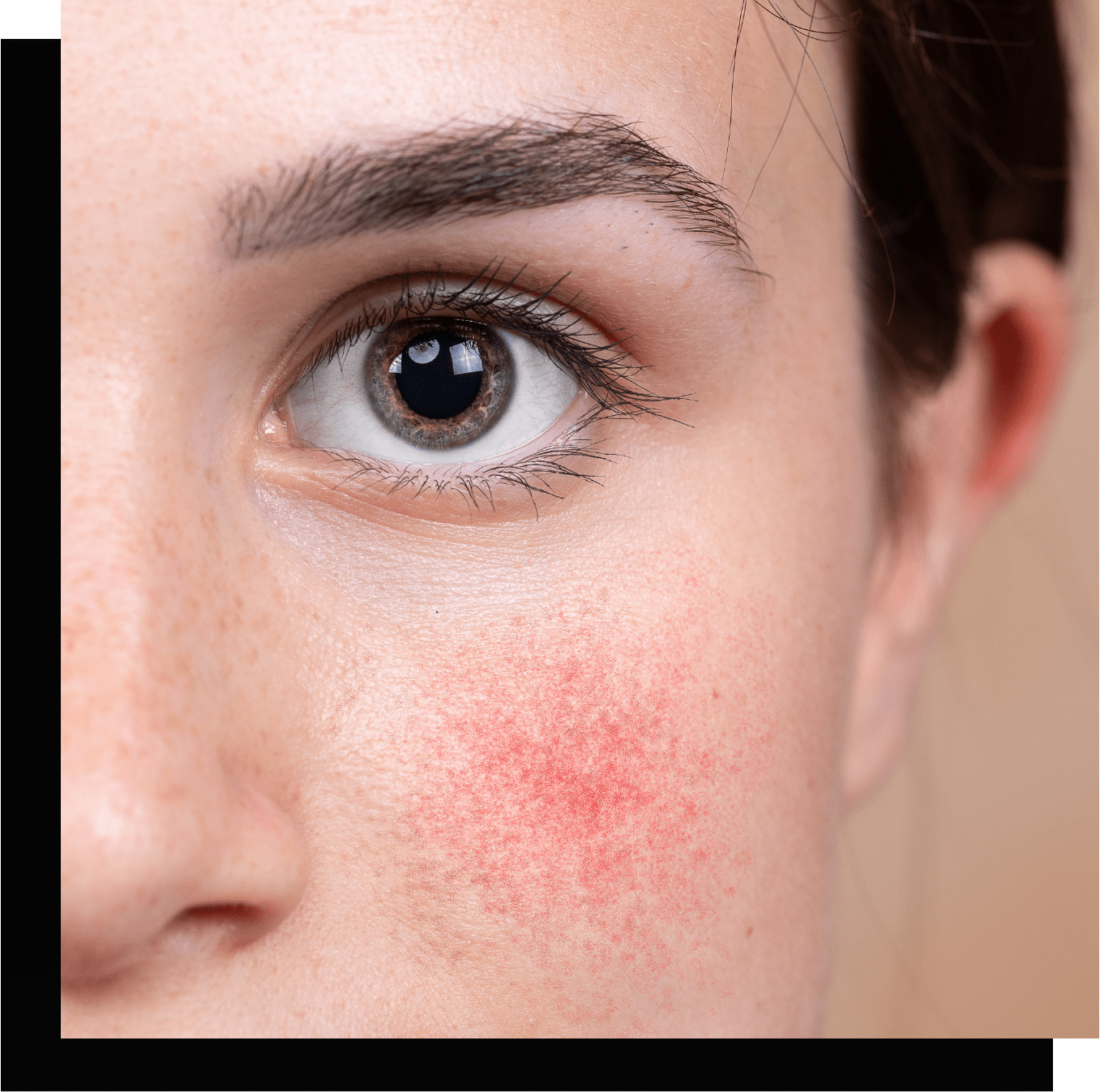WHAT IS IT? WHAT ARE THE CAUSES, SYMPTOMS AND SIGNS?
Rosacea is a non-contagious skin inflammation that primarily affects the face. Surface capillaries dilate, creating a red flush that may be accompanied by small pustules and lumps. The most severe cases of Rosacea can create an enlarged nose, referred to as Rhinophyma. Rosacea is most predominant in skin with Celtic heritage, is three times more common in women and can develop between the ages of 30 and 60.
Whilst there are no definite causes of Rosacea, a combination of hereditary and environmental factors can trigger and aggravate its symptoms. Also, there are three possibilities that contribute to the formation of Rosacea. They include:
- Cathelicidins (increased peptide and enzyme activity on the skin’s surface layer)
- Intestinal Bacteria (elevated hydrogen and methane)
- Dermodex Mites on the skin (reaction to faeces)
Whilst rosacea cannot be cured, triggers that can exacerbate symptoms include:
- Heat
- Temperature changes
- Strenuous Exercise
- Sunlight
- Sunburn
- Stress
- Anxiety
- Anger
- Spicy Foods
- Cold
- Alcohol
- Caffeine
- Histamines (wine, cheese, yoghurt, beer)
- Over-application of aggressive skincare products

FACIAL ROSACEA IS CATEGORISED INTO FOUR SUBTYPES, EACH WITH VARYING DEGREES OF SYMPTOMS:
Erythematotelangiectatic Rosacea – This condition causes flushing, redness and sensitivity. It produces a permanently red face that can become rapidly red. The blood vessels below the surface of the skin become dilated, causing broken capillaries otherwise known as spider veins. The skin often becomes very sensitive and sufferers may experience an itching or burning sensation.
Papulopustular Rosacea – permanent redness, red papules and pustules. The appearance of papulopustular is often mistaken for acne as it possesses characteristic similarities.
Phymatous Rosacea – Rhinophyma (most common in men), skin thickening of chin/cheeks/forehead/nose. This subtype is not as common, however, when it does occur, the person will most likely show symptoms of another subtype of Rosacea first. The symptoms include bumpy skin texture, enlarged pores, oily skin and visibly broken blood vessels.
Ocular Rosacea – This causes an inflammation of the eyes and is commonly accompanied by symptoms of Rosacea. It produces a watery or bloodshot appearance and can feel gritty, as though there is sand in the eyes. Furthermore, the eyes may feel dry, itchy, and sensitive to light. It can also sting/burn. Some people experience blurry vision or a cyst on the eyelid.
TREATMENT SOLUTIONS
PHOTO REJUVENATION
Photo Rejuvenation utilises a specific light designed to target Rosacea. The light is transformed into heat energy that can treat the areas of redness without harming the skin’s surface. Photo rejuvenation is a non-invasive treatment performed with a medical-grade Intense Pulsed Light (IPL). Using multiple wavelengths of light, Photo Rejuvenation treats the dilated blood vessels in the face caused by Rosacea, causing the affected structures to absorb light. It results in the destruction of visible blood vessels, which then become naturally absorbed by the body. Over time, and with the right course of treatment, the redness and flushing of the skin that causes Rosacea is visibly reduced.
GUT HEALTH

